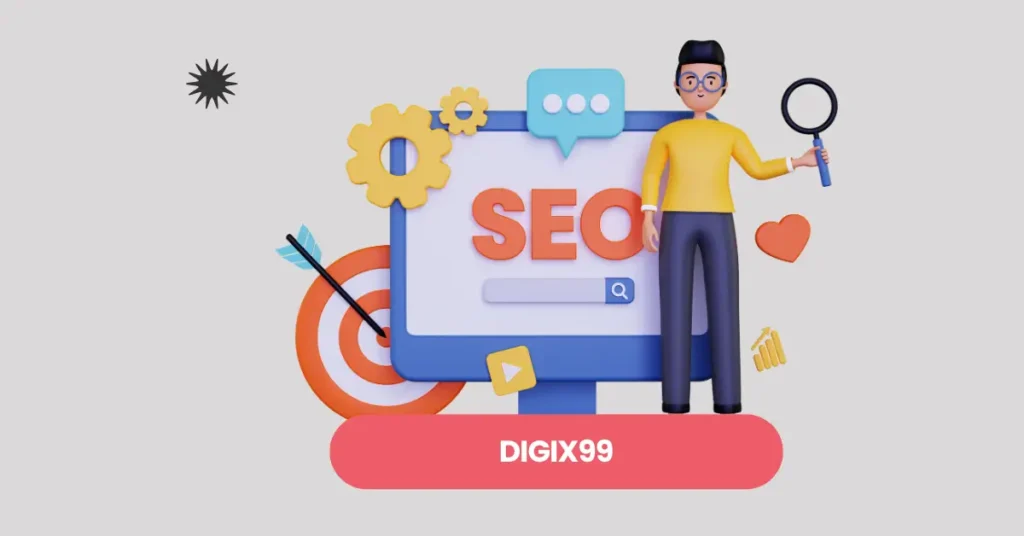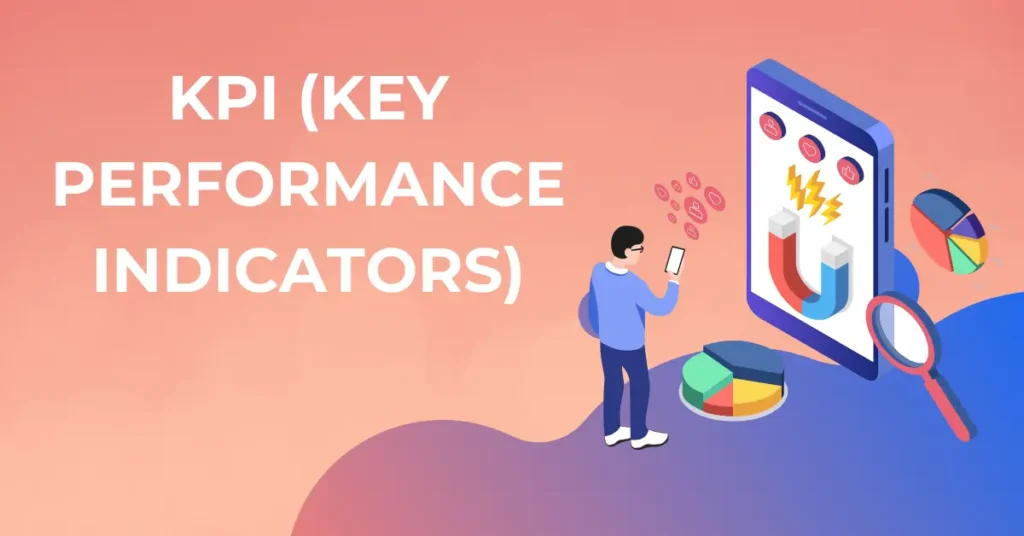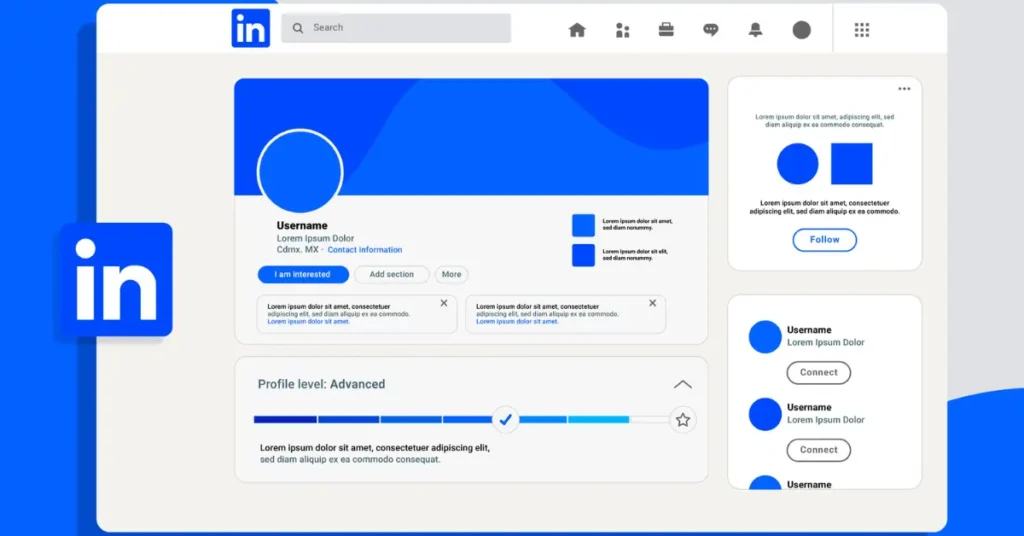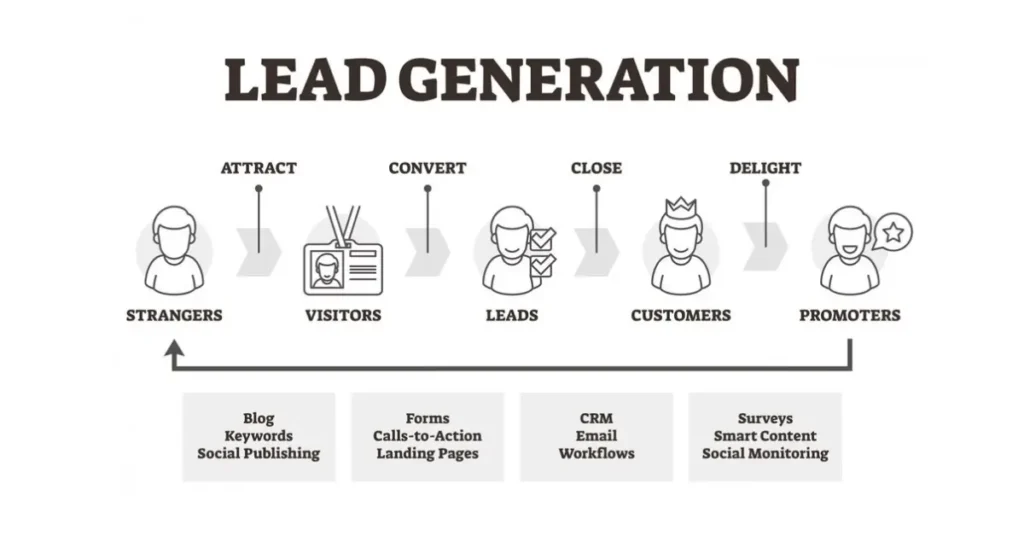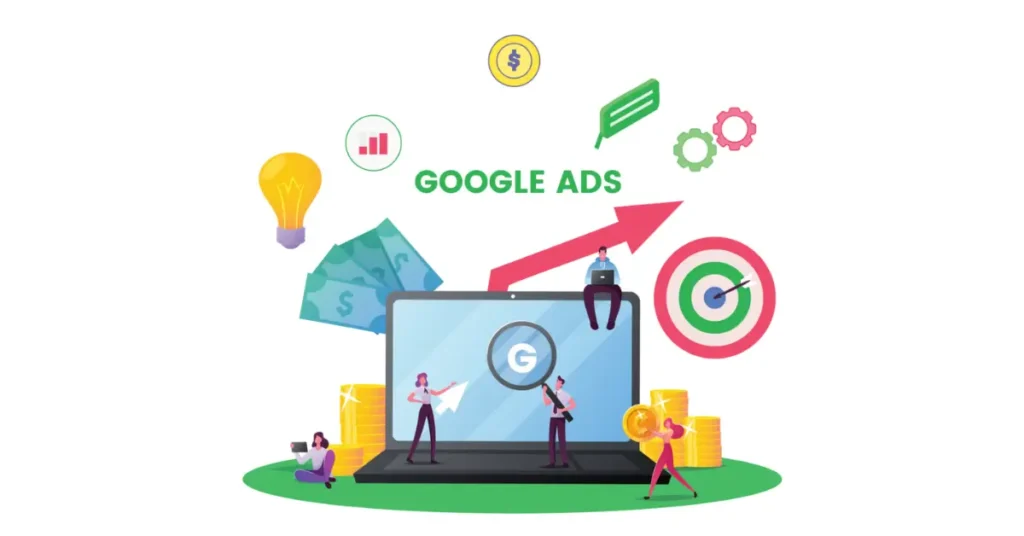Lead generation is a crucial element of any successful digital marketing strategy. In today’s fast-paced digital world, it’s not enough to simply develop a marketing campaign and hope for positive results. As a digital marketer, it is your responsibility to narrow down a vast pool of potential customers into a smaller subset of individuals who are most likely to become paying customers.
What is Lead Generation?
Lead generation refers to the process of attracting and converting potential customers (leads) into individuals who have shown interest in a product or service and have the potential to become paying customers. The goal of lead generation is to initiate and cultivate consumer interest in a business’s products or services. This is typically done through various marketing strategies and techniques.
The process often involves capturing a person’s contact information, such as their name, email address, phone number, etc., so that businesses can follow up with them and nurture the relationship, ultimately guiding them through the sales funnel. Lead generation can take place through online and offline channels, including websites, social media, email campaigns, events, and more.
Businesses use lead generation as a fundamental aspect of their marketing efforts to identify and connect with individuals who are more likely to convert into customers. Effective lead generation strategies help businesses build a pipeline of potential customers, allowing them to focus their sales and marketing efforts on individuals who have already expressed some level of interest in what they offer.
Why is Lead Generation Important?
Without a well-defined lead generation strategy, businesses often resort to cold calling, which can not only be ineffective but can also damage a brand’s reputation. Think about it – if you repeatedly receive promotional emails for a product or service that you have zero interest in, you’re unlikely to view that company’s marketing efforts favorably. In fact, online-savvy customers are wary of blatant sales pitches and tend to be more hesitant to engage with companies that appear more interested in their money than addressing their pain points.
On the other hand, targeting individuals who have already expressed an interest in your product or service is a much more organic and effective approach. By focusing your efforts on those who have already shown interest, you can tailor your marketing messages to address their specific needs and pain points, increasing the likelihood of conversion.
The Role of Lead Generation in Digital Marketing
Lead generation in digital marketing involves utilizing various online channels and tactics to capture the attention and interest of potential customers. These channels can include websites, blogs, social media platforms, email campaigns, and more. The goal is to attract qualified leads who are most likely to convert into paying customers.
Strategies for Lead Generation
There are several strategies you can employ to generate leads through digital marketing. Let’s explore some of the most effective ones:
- Content Marketing: Content marketing is a key element in lead generation. By creating original and relevant content, such as blog posts, articles, and downloadable resources, you can attract and engage potential customers. Gated content, such as e-books or guides, can be used to capture leads by requiring contact information in exchange for access to the content.
- Search Engine Optimization (SEO): Optimizing your website and content for search engines is essential for lead generation. By implementing SEO strategies, such as keyword research and optimization, you can improve your website’s visibility in search engine results, driving more organic traffic and potential leads.
- Paid Advertising: Paid advertising, such as Google AdWords or social media ads, allows you to target specific audiences and generate leads quickly. By creating compelling ad campaigns and directing traffic to dedicated landing pages, you can capture the contact information of interested prospects.
- Social Media Marketing: Leveraging social media platforms, such as Facebook, Instagram, and LinkedIn, can be highly effective in lead generation. Engaging with your target audience through relevant and valuable content, running targeted ads, and utilizing features like live videos or polls can help attract and capture leads.
- Email Marketing: Email marketing remains a powerful tool for lead generation. By building an email list of interested prospects, you can nurture them with personalized and targeted content, keeping your brand top-of-mind and increasing the chances of conversion.
- Events and Webinars: Hosting events, webinars, or workshops provides an opportunity to engage directly with your target audience. By capturing their contact information during registration, you can generate leads and provide valuable content or insights that align with their interests.
Tools for Lead Generation
To effectively implement your lead generation strategies, there are several tools available that can streamline the process and improve your results. Here are some popular tools to consider:
- Salespanel: Salespanel is a lead generation tool that helps identify companies visiting your website, track and qualify leads, and provide valuable insights for better lead nurturing and conversion.
- Intercom: Intercom offers various features for conversational marketing, including on-site messaging, chatbots, and customized bots, allowing you to engage with visitors and capture their contact information.
- HubSpot: HubSpot is a comprehensive platform that offers tools for lead generation, including landing page creation, form builders, email marketing, and CRM integration, enabling you to manage and nurture leads effectively.
- Paperform: Paperform is a versatile tool for lead generation, offering customizable forms, surveys, and quizzes that can help capture valuable information from potential customers.
- Mailshake: Mailshake is an email outreach tool that allows you to automate and personalize your cold email campaigns, helping you generate leads and drive conversions.
The Role of AI in Lead Generation
Artificial Intelligence (AI) has become an integral part of lead generation. AI-powered tools can automate repetitive tasks, analyze data to identify potential buyers, personalize content, and optimize campaigns for better results. By leveraging AI, businesses can save time and resources while improving lead generation efforts.
Conclusion
Lead generation is a critical component of any successful digital marketing strategy. By implementing effective lead generation strategies, utilizing the right tools, and leveraging AI technology, businesses can attract and capture qualified leads, nurture them, and ultimately increase their chances of conversion. Remember, lead generation is not a one-time effort but an ongoing process that requires continuous optimization and adaptation to the ever-changing digital landscape.


